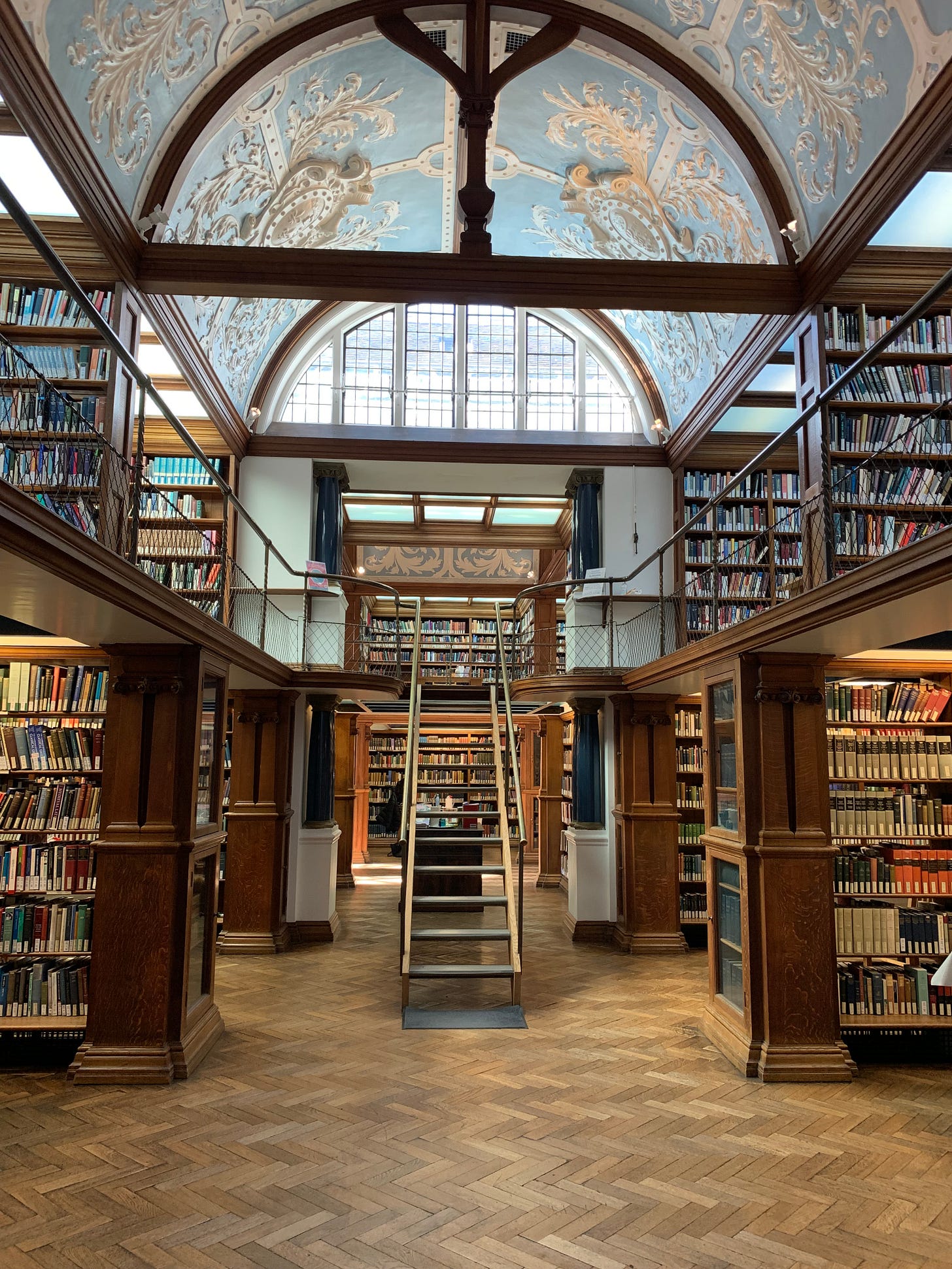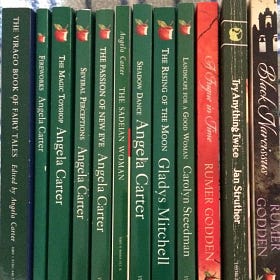Laughter in the library
Introducing F.M. Mayor's The Rector's Daughter (1924)
Hello and a warm welcome to this week’s edition of the Ladies’ Dining Society. It’s a mild, sunny day as I write here in Cambridge, but the leaves are changing colour rapidly and starting to twirl downwards (always hard to resist gathering those shiny new conkers/horse-chestnuts). Soon students will be returning to their colleges in the town, and some of them might even be lucky enough to study somewhere like this, below. It’s the beautiful Yates Thompson Library at Newnham College Cambridge, designed by Basil Champneys in 1897.
When the young Flora Macdonald Mayor first became a student at Newnham in the early 1890s this library had not yet been built. Studying and living in Cambridge was a life-changing experience for her, allowing her the freedom to make new friends and enjoy reading and discussing books. (It’s pretty much what we do here on Substack too.) Below is my essay about F.M. Mayor’s life and work.

First, some news
After almost a year of writing my newsletter I’m delighted to report that Cambridge Ladies’ Dining Society is now a ‘Substack Bestseller’ (with a suitably autumnal orange tick after my name). Huge, heartfelt thanks for all your support. This post is free for all readers but as it’s the first in my ‘book club’ series, the discussion in the comments will be for paid subscribers. Thank you very much for reading!
Last month lots of readers reacted positively to my post about the history of the feminist publisher, Virago (see below) and in particular their role in reissuing ‘lost’ twentieth-century classics. However, as I wrote in ‘A 1924 best-seller’ previously, The Rector’s Daughter not exactly a neglected classic, over the past fifty years anyway. After Penguin Books reissued it in their Modern Classics series in 1973, Virago, took it over and reissued it in 1987 and then it was reprinted in 1999, 2008 (twice) and 2009 (three times). Even so, in 2010 BBC Radio 4 ‘Book at Bedtime’ described it as ‘an unfairly neglected classic’ when it was read in ten episodes by Juliet Stevenson (it's still available on the BBC Sounds app, and is well worth listening to). In 2021 The Rector’s Daughter was reissued by Persephone Books in an elegant new edition with a biographical foreword by Flora's great-niece, Victoria Gray, who in 1992 wrote a radio play based on the book with her late husband, the dramatist Simon Gray.
This week’s post is the first of what I’m hoping will become a regular book club series (more book clubs are listed in
’s indispensable Directory here). Every month or so I’ll suggest a mid-20th-century novel or memoir by a woman writer, with copies available secondhand or via a library if you’d like to read it. A few weeks later I’ll publish a piece about the book in this newsletter and then we can discuss it, either in a ‘chat thread’ or via the comments. Very much hoping you’ll join us. The Slightly Foxed editors have kindly given me permission to reproduce my essay on The Rector’s Daughter in full below.Reading 20th-century women writers
Hello and welcome to all my new subscribers, I’m so glad you’re here. Today’s piece is the story of how, back in the 1970s, the UK publisher Virago started re-issuing novels by international women authors from the 19th and 20th centuries. Today there are lots of publishing imprints (eg Daunt Books and Persephone in UK; McNally Editions in USA) as well a…
Keep reading with a 7-day free trial
Subscribe to Cambridge Ladies' Dining Society to keep reading this post and get 7 days of free access to the full post archives.







